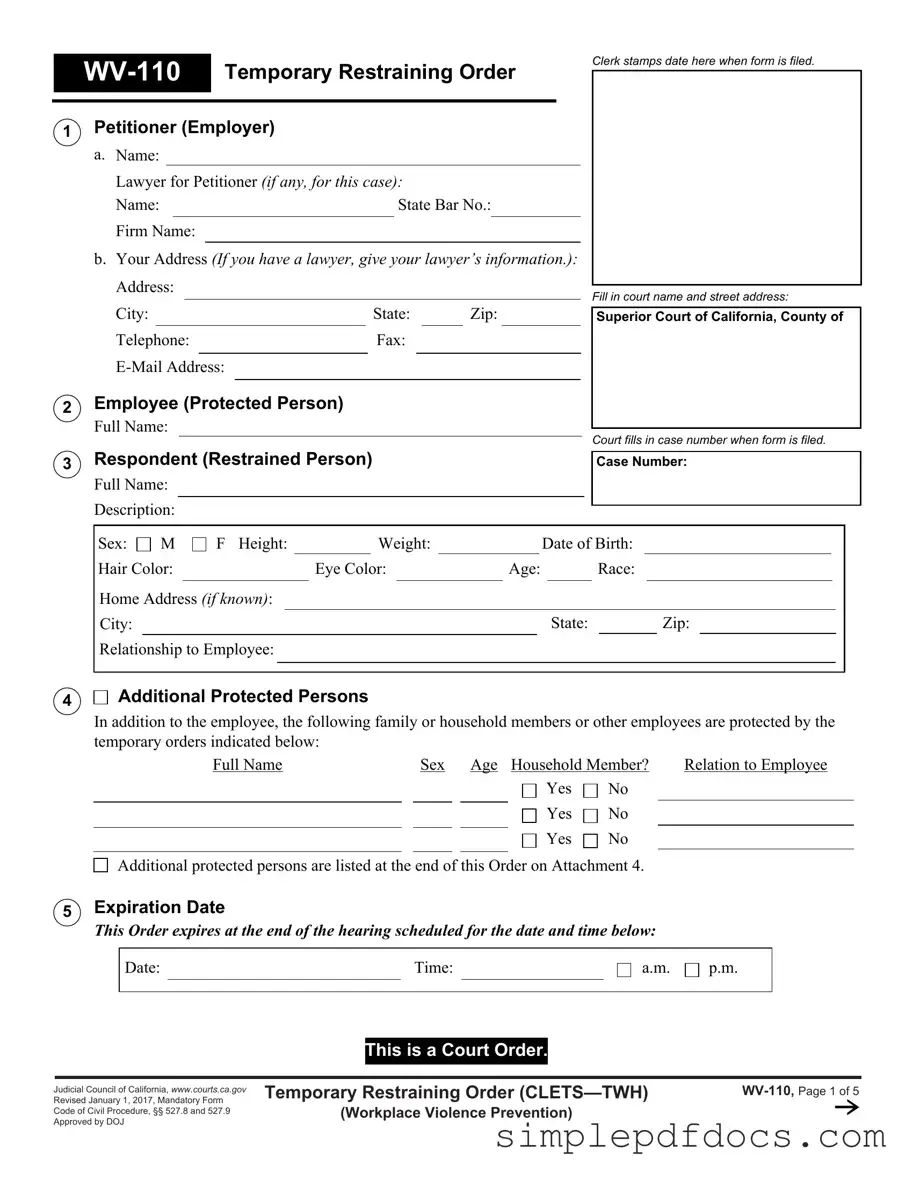The Fake Restraining Order form, known as WV-110, is an essential document designed to provide immediate protection for individuals facing threats or violence in the workplace. This form is primarily utilized by employers, who act as petitioners, to seek temporary restraining orders against individuals who pose a threat to their employees. It includes critical sections that capture the necessary information about both the petitioner and the respondent, such as names, addresses, and physical descriptions. The form outlines specific orders that can be granted by the court, detailing prohibited actions the restrained person must avoid, such as harassment, stalking, and contact with the protected individual. Additionally, it includes provisions for firearm restrictions, ensuring that the respondent cannot possess or acquire any weapons during the order's duration. The order also specifies the expiration date, which is typically set for the end of a scheduled court hearing, and emphasizes the legal consequences for violating the terms of the restraining order. This form serves not only as a protective measure but also as a legal document that must be properly filed and enforced, highlighting the seriousness of workplace safety and the legal framework designed to uphold it.
